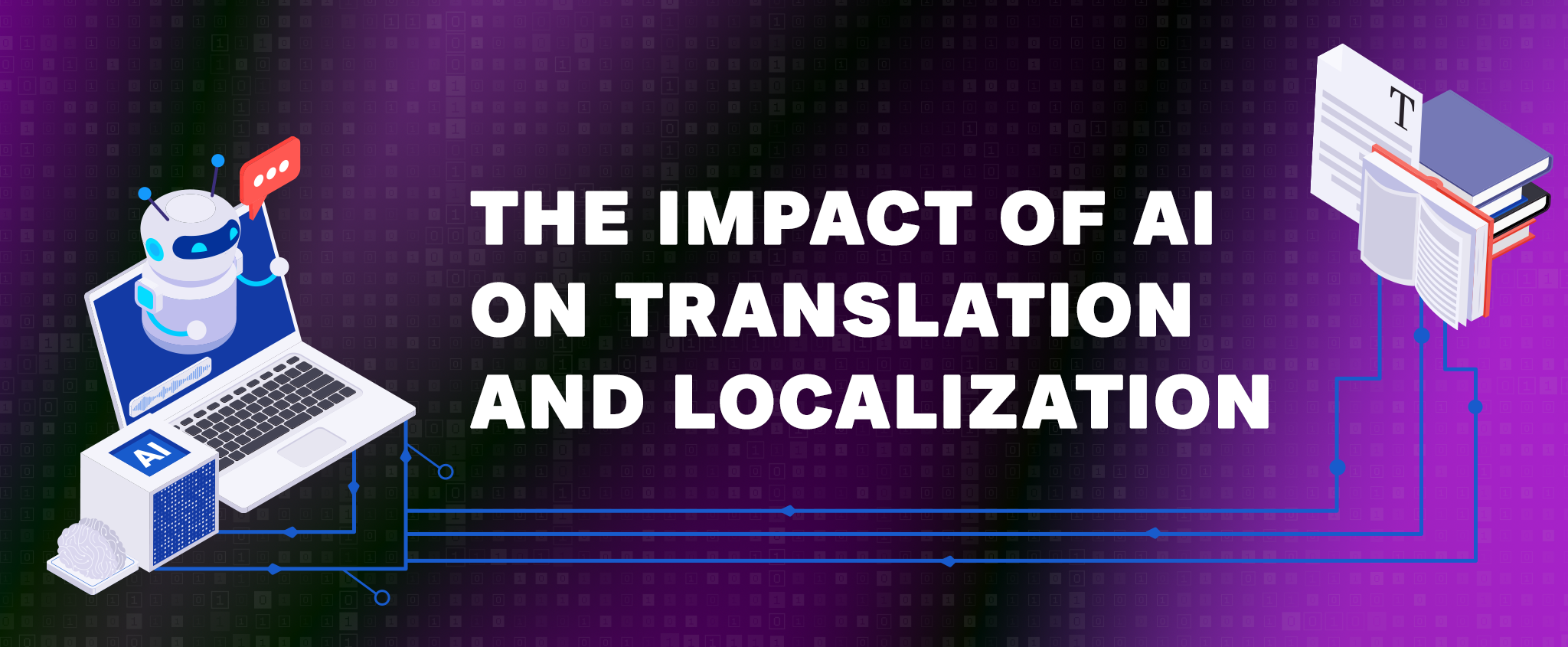The Impact of AI on Translation and Localization
In our rapidly evolving digital age, technology continues to reshape industries across the globe, and the world of language translation and localization is no exception. The impact of AI on translation has created a new era of efficiency and accessibility. The synergy between AI and localization has expedited the process and led to remarkable accuracy and consistency. This article delves into the world of AI-powered translation, highlighting its profound impact and exploring whether it can replace human translation.
Key Takeaways
- The impact of AI on translation has ushered in a transformative era of language communication.
- The synergy between AI and localization has expedited the translation process and improved consistency, making it a vital tool for cross-cultural communication.
- Different machine translation methods offer various strengths and weaknesses depending on language pairs and desired translation quality.
- While AI translation has automated processes and improved efficiency, it can’t replace human translators, can it?
Table of content

What is AI Translation?
AI-powered translation, commonly referred to as machine translation, represents a groundbreaking technology that harnesses the capabilities of artificial intelligence to convert text or speech from one language to another. This innovation plays a vital role in facilitating seamless cross-cultural communication. AI translation is like a language superhero, busting through barriers and helping us to understand each other, no matter where we’re from.
Different Methods of Machine Translation
The Impact of AI on translation processes has led to the development of various methods of machine translation. The choice of technique depends on various factors, including language pairs, available resources, and the desired level of translation quality.
Let’s dive deep into the world of different machine translation methods:
Statistical Machine Translation (SMT)
By examining enormous bilingual libraries, SMT algorithms find statistical patterns to map phrases and sentences from one language to another. These systems divide input text into smaller pieces, such as phrases or words, which are rearranged and recombined in the target language. SMT’s strength is its ability to accommodate a wide range of language pairs and dialects, making it a fundamental tool for multilingual communication. However, its reliance on pre-existing parallel databases and statistical trends might lead to errors, especially when dealing with languages with differing structures.
Rule-Based Machine Translation (RBMT)
Rule-Based Machine Translation provides translation utilizing clear linguistic rules. Linguists and language experts develop complicated sets of grammatical and syntactical rules to guide the translation process. RBMT is especially effective for languages with well-defined grammatical rules since it allows more accurate translations. However, creating and maintaining these rule sets can be time-consuming and difficult, and the approach may struggle with idiomatic expressions or languages with complicated structures.
Neural Machine Translation (NMT)
Neural Machine Translation, the darling of modern machine translation, has achieved remarkable success by leveraging deep neural networks. Unlike SMT’s reliance on statistical patterns, NMT models process entire sentences as sequences, capturing contextual nuances more effectively. This approach is particularly adept at handling languages with intricate word orders and idiomatic expressions. NMT has become the go-to method for many language pairs due to its fluency and ability to generate more human-like translations. However, it often requires large amounts of training data and substantial computational resources.
Hybrid Machine Translation
Recognizing the strengths of both SMT and NMT, researchers have explored Hybrid Machine Translation. This approach combines the statistical learning of SMT with the contextual understanding of NMT. Hybrid models can leverage existing linguistic resources while benefiting from neural network advancements. This approach is valuable when dealing with low-resource languages, where ample parallel data might not be available.
Example-Based Machine Translation (EBMT)
Example-Based Machine Translation focuses on the reuse of translation examples from a database. Instead of generating translations from scratch, EBMT retrieves similar sentences or phrases from its database and adapts them to the current context. This method is highly effective for specific domains or industries with recurring terminologies, such as technical documentation or legal texts. However, its performance might degrade when encountering sentences that deviate significantly from the available examples.
The Pros and Cons of AI Translation
Let’s delve into the intersection of translation and AI, exploring both its pros and cons.
?? The pros of AI Translation:
- Improved Efficiency: AI translation tools process data rapidly without breaks, enabling faster content translation.
- Consistency: AI translation tools maintain consistent translations regardless of content complexity, ensuring uniformity across multiple translations through algorithmic rules.
- Cost Saving: AI translation offers cost-effective solutions by minimizing time and resource requirements.
- Rapid and Accurate Results: AI translation delivers almost instantaneous and highly accurate translation results, enhancing user experience.
- Multilingual Capability: AI translation supports a wide range of languages, accommodating diverse communication needs.
- Internet User Convenience: AI translation is seamlessly integrated into web pages, making content clear in any language and enhancing online user experience.
?? The cons of machine translation:
- Quality: Even the most advanced AI translation technologies fall below professional human translators, showing a visible gap in translation excellence.
- Grammar: Despite significant advances in recent years, machine translation struggles with grammatical complexities, particularly when crossing languages with noticeably different grammatical structures.
- Literal Translation: Despite advancements, algorithms predominantly generate outputs characterized by literal, word-for-word translations, failing to capture the essence of natural expression.
- Context: Although AI technologies have made tremendous progress in understanding context, the results are still far from matching the ideal.
The Impact of AI on Translation and Localization
The impact of AI on translation and localization is profound, revolutionizing the industry in its entirety. This evolution of machine translation has made the process of translation and localization faster. AI-powered tools usher in efficiency, resulting in quicker turnarounds and elevated productivity.
Further, machine learning drives continuous improvement, enabling nuanced translations by identifying linguistic complexities. Notably, AI simplifies the process of translation and localization, enabling access to a broader spectrum, unlocking fresh market potential, and fostering growth opportunities.
Can AI Translation Replace Human Translation?
The question of whether AI translation can replace human translation is multifaceted. While AI has made remarkable strides in automating translation processes, it falls short of replicating the holistic understanding and nuanced adaptation that human translators offer. AI excels in speed, handling large volumes of text, and providing a general sense of meaning. However, it struggles with capturing context, cultural subtleties, and the artistry inherent in languages.
Human translators possess cultural awareness, creativity, and the ability to adapt to evolving linguistic landscapes. The synergy between AI and human expertise holds promise, with AI aiding efficiency and humans infusing depth and authenticity. While AI is a powerful tool, human translation remains indispensable for preserving the essence and emotional resonance of content.
That’s why the need for TE, TEP, and MTPE Services is on the rise.
CCCI – Professional Professional TE, TEP, and MTPE Services
In this evolving landscape of AI and localization dynamics, the role of a language service provider becomes pivotal. At CCCI, we offer high-quality Translation Excellence (TE), Translation, Editing, and Proofreading (TEP), and Machine Translation Post-Editing (MTPE) services. Our services combine the speed of machine translation with the precision of human editing, delivering content that strikes the perfect balance between efficiency and quality. Through our suite of services, we provide you with the best of both worlds: the speed and efficiency of AI and the nuanced excellence of human translation. Contact us today!






